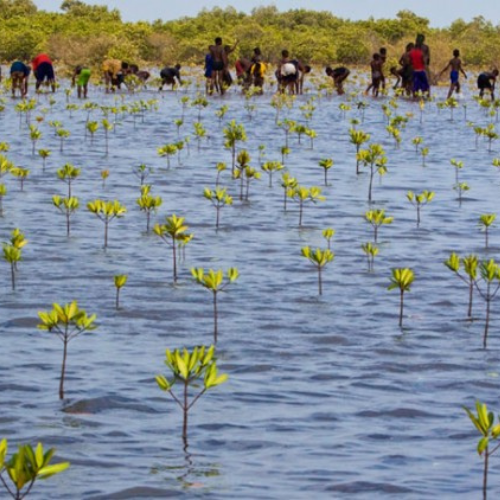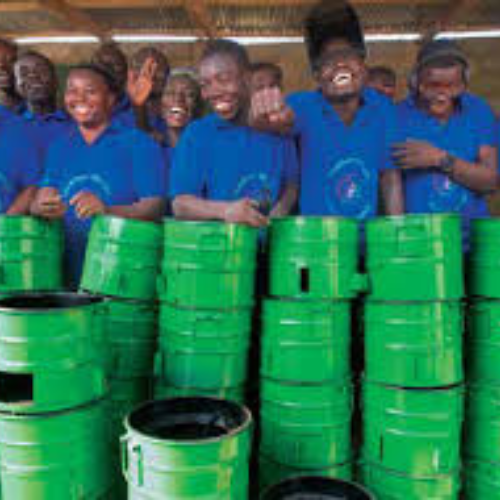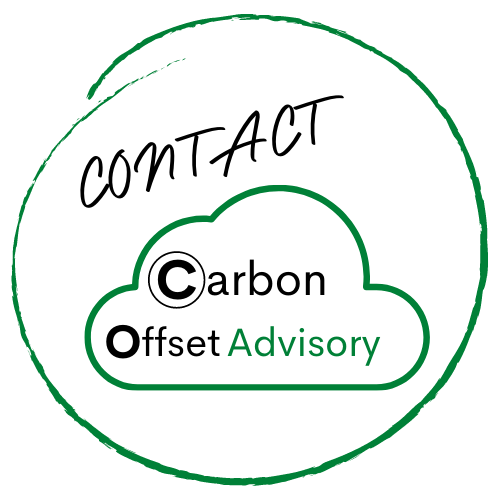SOCIAL
As the environmental movement has progressed over the years, it is becoming clear that it is simply not good enough to only consider the environmental impacts of development. Sustainability science is also a SOCIAL science. This means that it is increasingly critical that companies, organisations and institutions consider the triple P line (i.e. People, Planet, Profit). The three legs of sustainability are of course economic, environmental and social aspects of life (which relate to the three P’s).
Read More
What this translates to is that projects have not only an environmental benefit or commercial profit, but benefits relating to the well-being of the people involved in or experiencing the benefits of the project. We can interpret well-being to include any aspects of life that affect the overall health of a person, as well as the opportunities they have access to and their abilities to reach their full potential.
Projects that carry a community focus typically include activities that generate opportunities for people (and their families) to earn, sustain and benefit from decent livelihoods. Projects should enable people to do this in culturally appropriate ways, and in the environments and regions in which they already live.
Types of community projects
There is a plethora of community-focused projects happening around the world, ranging from tree planting, to responsible farming, to community managed woodlots, to microfinance programs, to ecotourism, to activities aimed at reducing human-wildlife conflict, to the use of fuel efficient cookstoves. Depending on the project type and location, it may be more focused on the economic, social or environmental aspects of sustainability. Nevertheless, all these projects will be reducing the impact of human activities on the environment and achieving an improvement in the ecosystem services of the area, as well as in the quality of life of the people involved.
Another community project model that organisations and businesses may be interested in is the concept of a social enterprise or co-operative. In this model, organisations run as a combination of business and a charity. Why are they a good idea? Social enterprises make sustainability translate into business sense as well, while still achieving positive social impact. They can help bring many aspects of sustainability into mainstream businesses. By putting pressure on large companies to do good AND be good, this will make sustainability (economic, social and environmental) a minimum and compulsory standard for businesses – not just an afterthought, a ‘nice to have’ or a way of paying lip service to the environmental movement.
Example of a community project – How do fuel efficient cookstoves work?
Examples of fuel efficient cookstoves are usually simple two-plate wood stoves made from mud and clay bricks, arranged in such a way that the flame is enclosed and concentrated into a small hole, over which a pot is place. Projects like this are generally focused in low income countries where poverty is deep, and where deforestation is widespread. Typically in regions such as South East Asia and sub-Saharan Africa.
What are the benefits of fuel efficient cookstoves?
- Reduce exposure to harmful carbon monoxide smoke (especially for women and children)
- Reduce burn accidents associated with cooking on open fires (e.g. three stone fires common in Africa and Asia) – especially of children playing near their mothers who are cooking
- Less wood is needed – The pieces of wood take longer to burn because they are less exposed to open air (so less wood is needed to cook the same quantity of food).
- Less wood means families (especially women and children) spend less hours per week collecting firewood. This frees them up for other useful activities such as preparing and growing food, childcare, education and earning income.
What are the challenges of running community focused projects?
- Ground truthing – organisations running projects need to ensure that what they report is happening is in fact happening on the ground!
- Need a representative on the ground regularly to ensure that families are maintaining their equipment or aspects of the project correctly e.g. if using clay woodstoves, ensuring that their stoves are regularly plastered with clay to stop them from cracking
- Nepotism and corruption – people involved on the ground may favour friends, family or politicians in the area through certain aspects of projects in order to look good or gain status
- Misappropriation of funding
- There is a real danger that organisations swoop in and provide a product or service which in fact is not what the community needs. If the community is poor, they may feel obliged to accept the project, and they may have very little ‘voice’ or representation of their real interests and needs.
How does supporting community projects help you to reduce your carbon footprint?
- You can buy carbon credits linked to community projects that are saving carbon emissions e.g. fuel efficient cookstoves
- How do carbon reducing projects such as fuel efficient cookstoves calculate how much carbon they are saving? They can calculate how much wood is saved by someone using the efficient woodstove (per year) and therefore how much carbon has been avoided from being emitted via burning more wood. This is done through practical experiments in the households, using monitoring equipment. It should be done very methodically, and projects should be audited for this (if they are certified to sell carbon credits), to ensure carbon credit calculations are accurate
- By supporting projects and buying carbon credits, you enable organisations and communities to expand the work they do and therefore increase the number of people that can reduce their own carbon emissions, as well as achieve an improvement in their quality of life and the quality of the ecosystem in which they live.
Read Less




Social




As the environmental movement has progressed over the years, it is becoming clear that it is simply not good enough to only consider the environmental impacts of development. Sustainability science is also a SOCIAL science. This means that it is increasingly critical that companies, organisations and institutions consider the triple P line (i.e. People, Planet, Profit). The three legs of sustainability are of course economic, environmental and social aspects of life (which relate to the three P’s).
Read More
What this translates to is that projects have not only an environmental benefit or commercial profit, but benefits relating to the well-being of the people involved in or experiencing the benefits of the project. We can interpret well-being to include any aspects of life that affect the overall health of a person, as well as the opportunities they have access to and their abilities to reach their full potential.
Projects that carry a community focus typically include activities that generate opportunities for people (and their families) to earn, sustain and benefit from decent livelihoods. Projects should enable people to do this in culturally appropriate ways, and in the environments and regions in which they already live.
Types of community projects
There is a plethora of community-focused projects happening around the world, ranging from tree planting, to responsible farming, to community managed woodlots, to microfinance programs, to ecotourism, to activities aimed at reducing human-wildlife conflict, to the use of fuel efficient cookstoves. Depending on the project type and location, it may be more focused on the economic, social or environmental aspects of sustainability. Nevertheless, all these projects will be reducing the impact of human activities on the environment and achieving an improvement in the ecosystem services of the area, as well as in the quality of life of the people involved.
Another community project model that organisations and businesses may be interested in is the concept of a social enterprise or co-operative. In this model, organisations run as a combination of business and a charity. Why are they a good idea? Social enterprises make sustainability translate into business sense as well, while still achieving positive social impact. They can help bring many aspects of sustainability into mainstream businesses. By putting pressure on large companies to do good AND be good, this will make sustainability (economic, social and environmental) a minimum and compulsory standard for businesses – not just an afterthought, a ‘nice to have’ or a way of paying lip service to the environmental movement.
Example of a community project – How do fuel efficient cookstoves work?
Examples of fuel efficient cookstoves are usually simple two-plate wood stoves made from mud and clay bricks, arranged in such a way that the flame is enclosed and concentrated into a small hole, over which a pot is place. Projects like this are generally focused in low income countries where poverty is deep, and where deforestation is widespread. Typically in regions such as South East Asia and sub-Saharan Africa.
What are the benefits of fuel efficient cookstoves?
- Reduce exposure to harmful carbon monoxide smoke (especially for women and children)
- Reduce burn accidents associated with cooking on open fires (e.g. three stone fires common in Africa and Asia) – especially of children playing near their mothers who are cooking
- Less wood is needed – The pieces of wood take longer to burn because they are less exposed to open air (so less wood is needed to cook the same quantity of food).
- Less wood means families (especially women and children) spend less hours per week collecting firewood. This frees them up for other useful activities such as preparing and growing food, childcare, education and earning income.
What are the challenges of running community focused projects?
- Ground truthing – organisations running projects need to ensure that what they report is happening is in fact happening on the ground!
- Need a representative on the ground regularly to ensure that families are maintaining their equipment or aspects of the project correctly e.g. if using clay woodstoves, ensuring that their stoves are regularly plastered with clay to stop them from cracking
- Nepotism and corruption – people involved on the ground may favour friends, family or politicians in the area through certain aspects of projects in order to look good or gain status
- Misappropriation of funding
- There is a real danger that organisations swoop in and provide a product or service which in fact is not what the community needs. If the community is poor, they may feel obliged to accept the project, and they may have very little ‘voice’ or representation of their real interests and needs.
How does supporting community projects help you to reduce your carbon footprint?
- You can buy carbon credits linked to community projects that are saving carbon emissions e.g. fuel efficient cookstoves
- How do carbon reducing projects such as fuel efficient cookstoves calculate how much carbon they are saving? They can calculate how much wood is saved by someone using the efficient woodstove (per year) and therefore how much carbon has been avoided from being emitted via burning more wood. This is done through practical experiments in the households, using monitoring equipment. It should be done very methodically, and projects should be audited for this (if they are certified to sell carbon credits), to ensure carbon credit calculations are accurate
- By supporting projects and buying carbon credits, you enable organisations and communities to expand the work they do and therefore increase the number of people that can reduce their own carbon emissions, as well as achieve an improvement in their quality of life and the quality of the ecosystem in which they live.
Read Less
Social
Increasing numbers of corporate and holidaymakers want to travel sustainably, and prefer environmentally aware providers when booking accommodation, events, and venues. The expectations of consumers have changed, and for the hotel industry, adapting to these changes is not only smart business but a strategic imperative.
Tourism is one sector with the biggest potential in the world. In Australia, the hotel and resort sector generates around $8 billion of revenue yearly. With this comes a large carbon emissions footprint, that needs to be acknowledged, measured and a strategy developed to reduce it. It is necessary to provide transparent information and a plan to the consumers who are also on the journey to carbon neutrality.
Read More
Currently, the hotel and resort industry faces the challenge of sustainability. How can we reduce our carbon footprint? Carbon Offset Advisory can help you understand the issues, the process and guide you through a strategic approach to improvement in environmental performance using progressive steps.
You need a plan to reduce resource consumption, improve efficiency, manage waste, control pollutants, use sustainable products, recycle and transition to carbon neutral suppliers.
To achieve this, we focus on several key areas:
- Commit, Measure and Act
- Empowering you with information that facilitates decision making.
- Decarbonise your supply chain.
- Using environmental performance and industry leadership as a positive marketing tool to grow business.
- Strategic implementation to minimise disruption and cost.
Carbon Offset Advisory develops achievable plans and strategies that will lead you to NET ZERO CARBON with minimal cost and disruption.
Read Less







